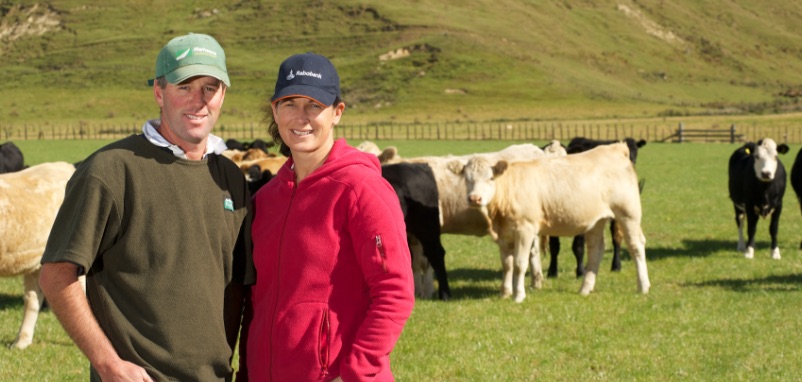The natural summer safe landscape is a clash of extremes with 465ha of medium-to-steep hill country looming over the 120ha of flats out the front. It’s a family business in the truest sense with Sheldon’s father, Richard, still making the 30-minute trip in from Feilding to do the tractor work, while the two smaller motorbikes in the shed are signs of extra help when the two children are home from boarding school.
Despite growing plenty of grass and only ever missing two fertiliser applications, Sheldon and Nicola still had trouble building phosphate levels in the soil and questioned whether their fertiliser programme was running as efficiently as it could be. The Martins’ property is a Meat and Wool survey farm and, through this connection, the facilitator told Sheldon and Nicola all the best-performing farms on his books were using Hatuma Dicalcic Phosphate®. They didn’t need to go far to see it for themselves – they had long admired a neighbouring block for its appearance and stock condition and after a discussion with the owner they discovered he’d been applying Hatuma Dicalcic Phosphate® for some time. After listening to other users, eight years ago Sheldon and Nicola decided to try it for themselves. They gave it an initial four-year trial period at 400kg/ha on hills but have since decreased the rate to 300kg/ha on the hills and 400kg/ha on the flats.
“The biggest change has been how evenly the place is grazed,” says Sheldon. “It might not seem like we’re growing as much but, at the same time, there isn’t the surplus rank grass as there was before because the stock eat everything. Over the winter we graze the grass right down and the stock always look content.” It’s not uncommon for the property to experience a dressing of snow up to five times a year, so Sheldon and Nicola are accustomed to nothing growing for two months of the year. The rough tucker left from the sheep used to satisfy the cattle but, now that the pasture’s become more palatable, this has become a thing of the past. “We still get a bit of rough grass but we don’t have to force the stock to clean it up any more,” Sheldon says. “This means the smaller paddocks created from a previous subdivision don’t need to be there now. We just leave the gates open 90% of the time so the ewes can spread out. The cows used to do most of the grazing in the winter but now the sheep eat everywhere. As a precaution, we grow about 40ha of supplements and 20ha of winter crops to help carry the 110 breeding cows, 105 weaners and 75 two-year-old cattle through the winter.”
“We used to rotate the ewes a lot and try to get the grass in front of them, but now we can set stock. They’re easier to handle and happier now and that helps with our time management. Clover growth has improved all over the farm. We used to use a little bit of urea on the flats but the only high-analysis fertiliser we use now is limited to the crops. The regrowth is good; it might not look like much from a distance, but it’s a lot more dense than it used to be and is a better quality. After a drought, it bounces back very quickly.”
“Keeping it simple is sustainable rather than the ‘push push’ model some choose to go down. We feel that what we’re doing on the farm at present means we’re well on our way to future-proofing the farm and reaching that ideal. We’ve got options that help us. We don’t have to go all breeding, we can shift to crops if need be, but the systems we’ve got are being maintained, even under these adverse seasons.”
“There is a whole lot of little things that improve the big picture. We still do the basics with animal health but, overall, the stock have improved. They seem to do better and that shows in the 10su/ha we’re carrying, which is about optimum for this place. The grass staggers in the cows has disappeared, although we still feed some magnesium for peace of mind. The lamb weights are better and their condition is improving all the time. Our cattle are doing better too.” This year Sheldon and Nicola were down on stock numbers, but sold 1,000 lambs at weaning at an average of 16.5kg. The rest were finished at 39kg then sold to another farmer who grows them on. They sell their steers at 600kg the same way and cull the heifers at 18 months at 400kg.
“We’ve noticed a lot of others around the district have started using Hatuma Dicalcic Phosphate. The results we’re getting and the cost of the product speak for themselves. The customer service we get from Roger, our Hatuma Field Representative, is great. He’s familiar with the history of the place and knows how to get the best results from the product.”
“For this industry our country’s isolation is our biggest advantage but only if we manage it well. We have to go down a quality path and Hatuma Dicalcic Phosphate is the right product for that.”

